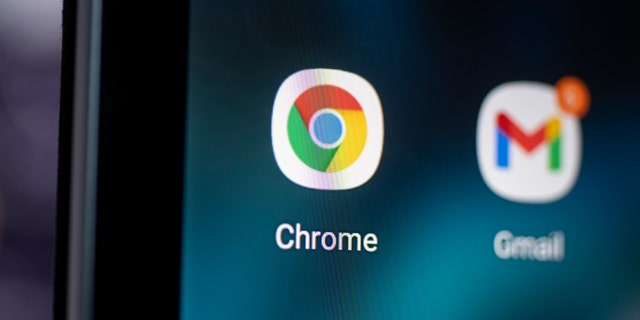I’ll never forget the caller on my national radio show asking me for guidance because her brother was scammed out of $450,000. He trusted the wrong person, and he’s far from alone. People simply don’t realize they’re being taken for a ride until it’s too late.
Then clues pop up. Maybe you sent a bunch of gift card codes, or there are emails you didn’t write in your outbox. Or worse, you get a notice about a loan in your name. Pro-tip: That’s why you need to get your free credit report every year.
It’s also the reason to check your Google account’s security. It only takes a minute and will reveal who has access to your account. Fingers crossed, it’s just you.
EXPOSED: UNCOVER THE TRACKING SECRETS OF APPLE AND MICROSOFT WHILE YOU WORK ON YOUR MAC OR PC
Join 509,000 people who get my free tech newsletter.
60-second safety check
I’m going to show you how to find digital clues a hacker got into your account, but that’s not all. This tip also works for spotting snoops. Is a friend or family member poking around your Google or Gmail account? Let’s sniff them out.
- Go to google.com/devices. Sign in if you aren’t already.
- Here, you’ll see a list of devices — the computers, smartphones and tablets you’re signed into or have been signed into within the last 28 days.
You can click each one to see which browser was used. That might be a tip-off someone else has logged in, say you see Chrome, but you only use Safari.

Google headquarters in Mountain View, Calif. (Marlena Sloss/Bloomberg via Getty Images, File)
Don’t panic if you see the same device multiple times. Each session (or instance you logged in) is recorded.
You may also see devices that have been inactive for a long time, like an old phone or computer you don’t use anymore. It’s wise to sign these devices out remotely.
- Click the one you want, then Sign out. This will remove access to your Google account from the device entirely.
You should also take that step for any devices you once used to access your account, like a friend’s tablet or a work computer.
I sent smart security tips via email almost every day. Get my free newsletter here.
WHAT HAPPENS TO YOUR PERSONAL INFO AFTER A DATA BREACH
Here’s the red flag
What happens if you see a computer, phone, tablet, or device you don’t recognize? That might be a bad sign but don’t panic right away.
You could have signed in through a VPN or you were on vacation, hence a different city. Or you borrowed a device from someone else.
If you don’t remember, or you’re sure it wasn’t you, do this:
- Click the device and choose Don’t recognize something? or Sign out. Again, this will sign the device out remotely.
Inbox a mess?Here’s the surefire way to keep your email in check

Google Chrome and GMail apps on a cellphone screen. (Fabian Sommer/picture alliance via Getty Images, File)
Now it’s time to protect your account
When it comes to cybersecurity, take the conservative approach. Maybe it was you, but there’s a chance someone else got into your account.
That means it’s time to change your password to be sure whoever logged in can’t do so again. Don’t reuse an old password or choose something easy to guess.
Bonus tip: Take a walk down your Google memory lane
Google’s Timeline feature shows you a summary of everywhere you’ve gone — down to the travel time, route you took and even the pictures you took when you arrived. It’s really worth checking out if you never have.
- Go to timeline.google.com
- Search for a date or click one of the blue bars below the date field. There you can see places you’ve visited, your route, pictures you took and timestamps for everything.
- At the bottom, there’s a red box with the number of places Google has tracked. Click that to see where you’ve been most.

Google landing page. (Fox News)
If that whole exercise gave you the creeps, click the blue button at the bottom to Manage Location History.
- From here, you can select Turn off or Turn off and delete activity.
- You’ll also see checkboxes for each device tied to your account with access to location history.
The more you know!
Keep your tech-know going
My popular podcast is called “Kim Komando Today.” It’s a solid 30 minutes of tech news, tips, and callers with tech questions like you from all over the country. Search for it wherever you get your podcasts. For your convenience, hit the link below for a recent episode.
PODCAST PICK: Hiring a hitman online, AI lifeguard & fake travel guides
Plus, concerned about ChatGPT scraping your data? I’ll show you how to stop it. Also, people are finding creative ways to earn money by renting out their Starlink satellites. Don’t miss Google’s latest gadgets, opportunities to earn money with your car, and tech travel tips you’ll use repeatedly.
My popular podcast is called “Kim Komando Today.” It’s a solid 30 minutes of tech news, tips, and callers with tech questions like you from all over the country. Search for it wherever you get your podcasts. For your convenience, hit the link below for a recent episode.
Check out my podcast “Kim Komando Today” on Apple, Google Podcasts, Spotify, or your favorite podcast player.
CLICK HERE TO GET THE FOX NEWS APP
Listen to the podcast here or wherever you get your podcasts. Just search for my last name, “Komando.”
Sound like a tech pro, even if you’re not! Award-winning popular host Kim Komando is your secret weapon. Listen on 425+ radio stations or get the podcast. And join over 400,000 people who get her free 5-minute daily email newsletter.
Copyright 2023, WestStar Multimedia Entertainment. All rights reserved.
